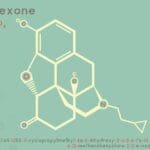Meth Is Bad News
The title of the show Breaking Bad—in which a high school chemistry teacher starts making meth as a strategy for covering medical bills—tells you just about everything you need to know about methamphetamines.
Meth is undeniably bad news, and using it is a reliable way to break your life apart. In fact, a substance use disorder centered on meth can be fatal.
While it is tempting to leave it at that—pointedly short and clear—let’s take a look at some of the specific ways in which meth lives up to the notions of “bad” and “breaking.”
Meth: What It Is and What It Does
Meth—often called crystal meth because it looks like small blue- or white-tinged rocks—is an extremely powerful man-made stimulant. Because it can be made from ingredients found at your local drug store, it became very popular, very quickly—including in the Midwest.
Whether smoked or snorted, meth rushes to the brain where it provides a huge boost to a person’s energy and alertness by releasing a flood of neurotransmitters including dopamine and serotonin. The effects can last as long as eight hours.
The Cycle of Comedowns and Binges
Eventually, the high from meth ends—and what replaces it can be quite unpleasant. Meth users often experience what are known as comedowns, an experience similar to the hangover one might get after a night of heavy drinking.
Comedown symptoms can include:
- Feelings of sadness, hopelessness, anxiety, and depression
- Fatigue coupled with an inability to sleep
- Headache from dehydration and pain in the jaw from clenching
- Muscle pain and weakness
- Decreased appetite and lack of motivation
These comedown symptoms—especially those negative feelings that can undermine your mental health—can last for several days. Comedowns can also be more difficult if meth has been mixed with other drugs.
In theory, it’s possible to outlast these comedown symptoms. If a person does not take any more meth, the comedown—like a hangover—will eventually subside.
The Binge
But many meth users find it very difficult to wait out the symptoms of a comedown. They miss the high and energy they experience when meth is in their system, and they are understandably eager to lessen the bad feelings that come after the drug has worn out. And so they take more meth.
Frequently, this leads to binging the drug. And now the user may be caught in a vicious cycle—taking more of the drug to fend off comedown symptoms, which increases the high and the side effects. In turn, this amped-up high can be followed by amped-up comedown symptoms, sending the user back for more meth.
This cycle can lead to a breaking of the body and brain’s normal processes. When this happens, a meth user is said to be “tweaking.” A person who is tweaking may not sleep for more than two weeks straight. Imagine not sleeping at all for as many as 15 consecutive days.
That lack of sleep no doubt contributes to the severe paranoia and even temporary psychosis that the user experiences while tweaking. At this point, the drug no longer provides any positive feelings—the euphoria the user was originally chasing—but it still offers plenty of negatives.
Those negatives include:
- Anxiety, irritability, and aggression
- Overheating, dehydration, and ongoing excess energy
- Loss of appetite
- Painful twinges and other pain in the body
- Repetitive or obsessive behavior
- Delusions or hallucinations that may include the sense that the skin is covered in bugs—leading to severe scratching and possible infections
With luck, a meth user will decide to give up the drug well before things get so bad that they are having vivid hallucinations involving insects. But no matter where in the cycle a person decides to quit, there is still one significant challenge to face.
That challenge is withdrawal.
Reasons to Worry About Withdrawal
As a rule, a meth user will start to notice withdrawal symptoms within the first 24 hours after they stop taking the drug. In about a week’s time, the symptoms of withdrawal will reach their peak and by the end of two weeks, many users have reported an abatement of symptoms.
Unfortunately, however, many meth users never make it to that two-week mark. Maybe they can make it past the significant cravings for meth that will pop up early in the process. Or maybe they can handle symptoms like fatigue and extreme sleepiness (symptoms that might be expected now that a stimulant has been removed from the body). Maybe they can handle other symptoms like a dry mouth or an increase in appetite or feelings of jitteriness.
But what often trips people up is a crushing level of depression—which frequently includes thoughts of suicide. This feeling of hopelessness is often enough to send a meth user back to the drug in the hope of making that feeling go away. Notably, feelings of depression are often associated with meth relapses, as well, so strong mental health interventions are essential to kicking meth over the long-term.
Fortunately, help is available.
Put Meth Abuse Behind You with Help from The Aviary Recovery Center
Meth use can be devastating to your body and your brain—and while you are in the grip of a substance use disorder, you may feel as though you cannot possibly regain your sobriety. But you can.
At The Aviary Recovery Center, we offer compassionate, evidence-based care that is personalized for your specific needs. We can help you through detoxification in a safe environment free from temptations. Then, the rehabilitation portion of your treatment will include both group and individual therapy. During therapy, you will learn strategies for maintaining your sobriety—and we will also be able to address any co-occurring mental health disorders (including depression related to meth use).
Breaking news: We can help you trade bad for good.
(314) 464-0222. We’re here to help.










